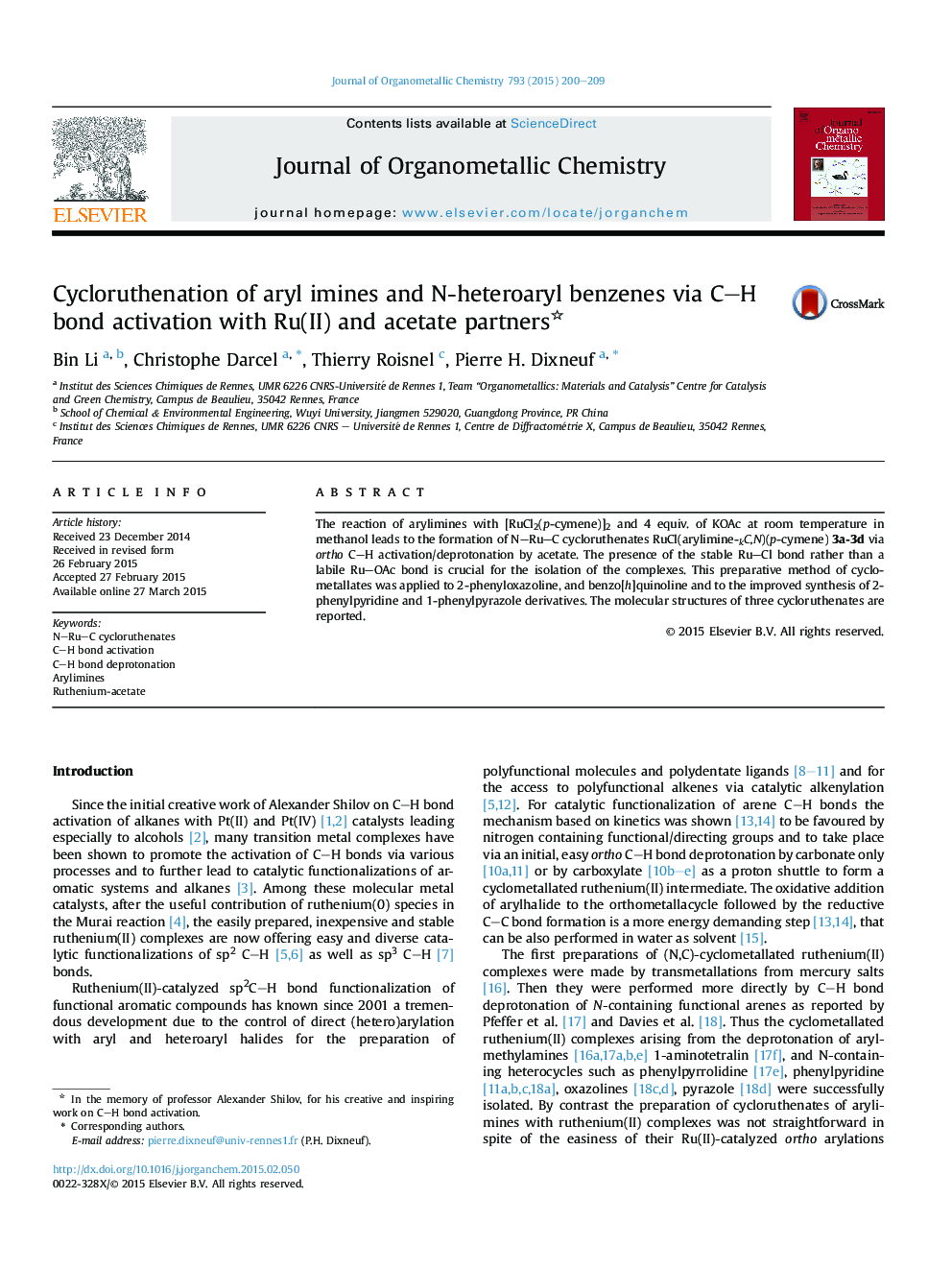| کد مقاله | کد نشریه | سال انتشار | مقاله انگلیسی | نسخه تمام متن |
|---|---|---|---|---|
| 1322007 | 1499850 | 2015 | 10 صفحه PDF | دانلود رایگان |

• Room temperature (N–Ru–C)-cycloruthenation of arylimines.
• Key role of acetate for C–H bond activation/deprotonation.
• Ru–Cl remaining bond is crucial for cycloruthenate isolation.
The reaction of arylimines with [RuCl2(p-cymene)]2 and 4 equiv. of KOAc at room temperature in methanol leads to the formation of N–Ru–C cycloruthenates RuCl(arylimine-kC,N)(p-cymene) 3a-3d via ortho C–H activation/deprotonation by acetate. The presence of the stable Ru–Cl bond rather than a labile Ru–OAc bond is crucial for the isolation of the complexes. This preparative method of cyclometallates was applied to 2-phenyloxazoline, and benzo[h]quinoline and to the improved synthesis of 2-phenylpyridine and 1-phenylpyrazole derivatives. The molecular structures of three cycloruthenates are reported.
(N–Ru–C)-cycloruthenates are easily prepared at room temperature on reaction of arylimines with [RuCl2(p-cymene)]2 and KOAc in methanol, via ortho arene C–H activation/deprotonation by acetate. The presence of a Ru–Cl remaining bond, instead of a Ru–OAc bond, is crucial for compound isolation. This preparative method was applied to 2-phenyloxazoline, benzo[h]quinoline, 2-phenylpyridine and 1-phenylpyrazole derivatives.Figure optionsDownload as PowerPoint slide
Journal: Journal of Organometallic Chemistry - Volume 793, 15 September 2015, Pages 200–209